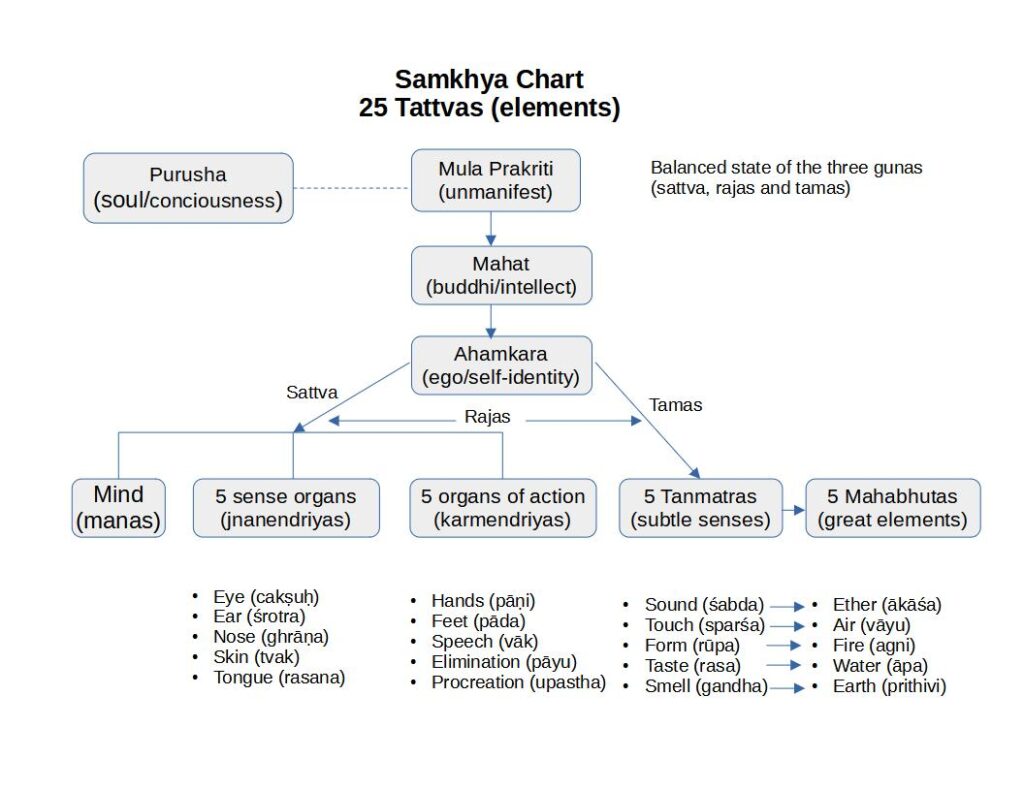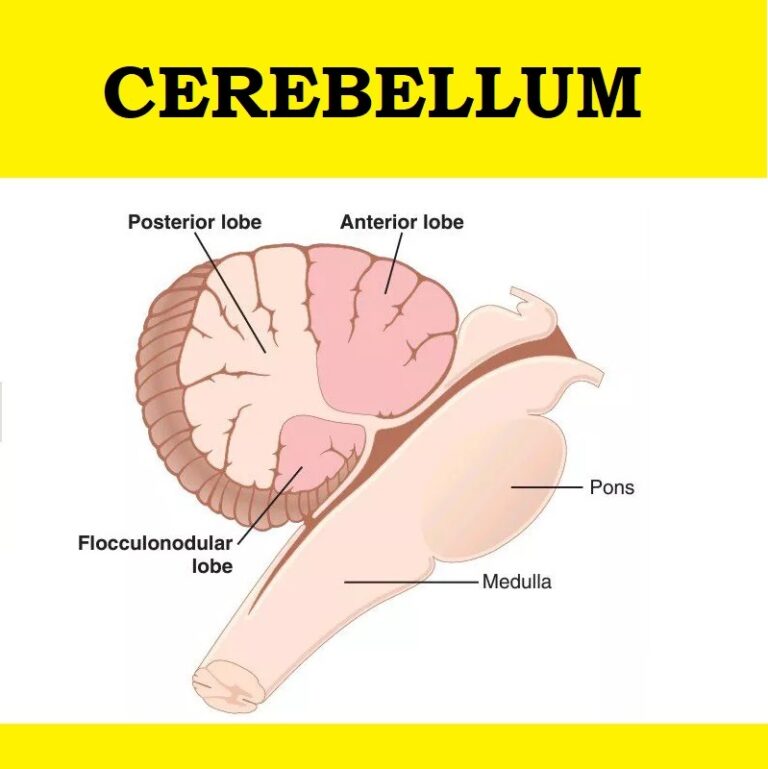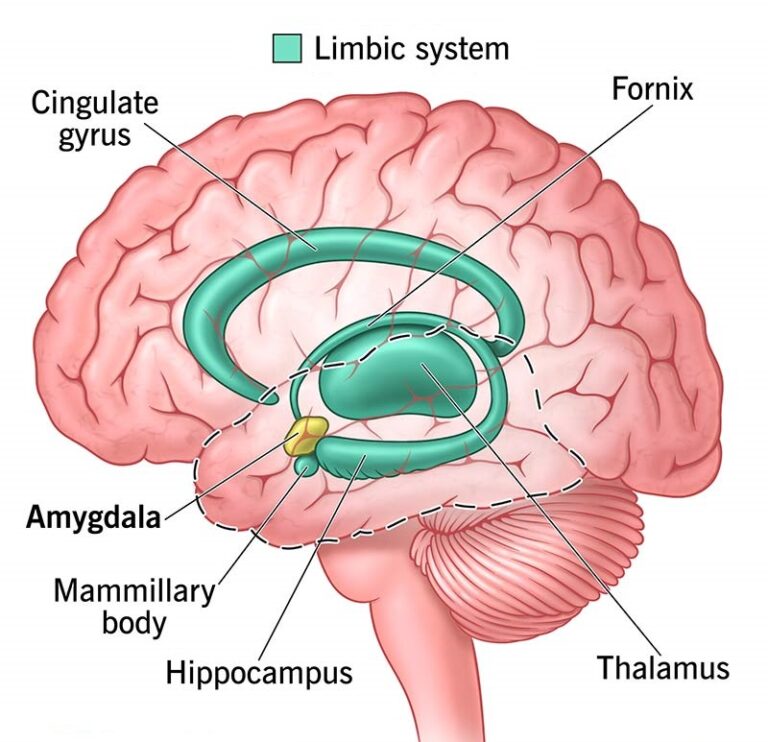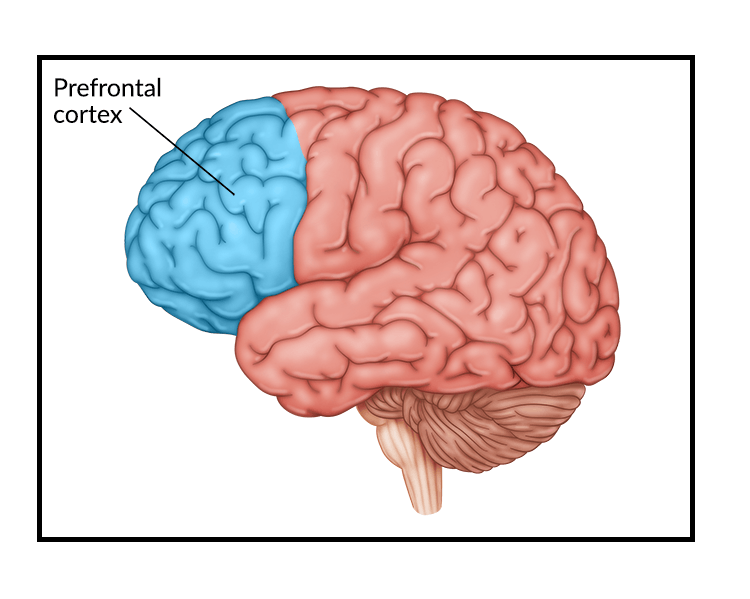
Sankhya Philosophy and Its Psychological Insights
The Sankhya philosophy, one of the six orthodox schools of Indian philosophy, offers a dualistic understanding of reality. It is based on the interplay of Purusha (consciousness) and Prakriti (matter). This ancient framework has profound implications for psychology, particularly in the areas of self-awareness, cognitive processes, and emotional regulation. Let’s delve deeper into its concepts and their relevance to modern psychology, supported by charts and references.
1. The Duality of Purusha and Prakriti
- Purusha (Consciousness):
- The eternal, unchanging observer.
- Represents awareness and detachment, similar to modern ideas of mindfulness and metacognition (Lutz et al., 2007).
- Prakriti (Matter):
- The dynamic, ever-changing energy that constitutes the mind, body, and environment.
- Its transformations (vikritis) include the mind (Manas), ego (Ahamkara), and intellect (Buddhi).
| Aspect | Purusha | Prakriti |
|---|---|---|
| Nature | Unchanging, eternal | Dynamic, mutable |
| Role in Experience | Observer of thoughts and emotions | Source of thoughts and emotions |
| Modern Parallel | Metacognition, self-awareness | Cognitive and emotional processes |
2. The Journey of Purusha into Matter
The Sankhya system presents a comprehensive framework for understanding the process of cosmic evolution and human experience, starting from the union of Purusha (pure consciousness) and Prakriti (primordial matter). It systematically describes how the unmanifest becomes manifest, leading to the creation of the universe and human faculties like the mind, senses, and actions.
Stage 1: Mahat (Cosmic Intelligence)
- The first manifestation from Prakriti is Mahat or universal intelligence.
- Psychological Implication: Mahat is akin to human intellect (Buddhi) responsible for discernment and decision-making.
Stage 2: Ahamkara (Ego or Self-Sense)
- From Mahat arises Ahamkara, the sense of individuality or “I-consciousness.”
- Division of Ahamkara:
- Sattvic Ahamkara: Produces the mind (Manas) and cognitive faculties.
- Rajasic Ahamkara: Gives rise to the senses and organs of action.
- Tamasic Ahamkara: Creates the five subtle elements (Tanmatras).
3. Five Subtle Elements (Tanmatras)
| Subtle Element | Quality | Sense |
|---|---|---|
| Sound | Hearing | Ear |
| Touch | Skin | Touch |
| Form/Color | Sight | Eye |
| Taste | Tongue | Taste |
| Smell | Nose | Smell |
- These subtle elements combine to form the five gross elements (Panchabhutas): Ether, Air, Fire, Water, and Earth.
4. Five Senses and Five Actions
From Ahamkara emerges the ten faculties that govern sensory perception and actions.
| Type | Faculties | Function |
|---|---|---|
| Five Senses | Hearing, Sight, Smell, Taste, Touch | Perception of the external world |
| Five Actions | Speech, Grasping, Movement, Excretion, Reproduction | Interaction with the world |
- Psychological Implication:
- The senses (Jnana-Indriyas) allow perception, while actions (Karma-Indriyas) enable expression.
- This dual framework mirrors the input-output processes in modern cognitive science.
5. The Mind: Manas, Buddhi, and Chitta
| Aspect | Description | Modern Psychological Parallel |
|---|---|---|
| Manas (Mind) | Processes sensory input and integrates it | Working memory and attention |
| Buddhi (Intellect) | Discerns, analyzes, and decides | Executive functions |
| Chitta (Memory) | Repository of past impressions (Samskaras) | Long-term memory |
Practical Relevance:
- Understanding these faculties helps address issues like cognitive distortions, decision-making errors, and memory biases.
6. Sankhya Philosophy in Psychology
Framework of Experience:
- Perceiver: Purusha
- Perceived: Prakriti and its manifestations
- Process: The journey from subtle to gross, culminating in sensory perception and action.
Relevance to Modern Psychology:
- Self-Concept: The interplay of Purusha (pure self) and Ahamkara (ego) informs self-awareness.
- Cognitive Science: The processes of sensory perception, memory, and decision-making align with cognitive and behavioral models.
- Mindfulness: The concept of witnessing (Purusha) resonates with modern mindfulness practices.
7. Visual Representation: Sankhya Evolution
Flowchart of Evolution

8. Practical Applications
Therapeutic Use:
- Recognizing the interplay of gunas can aid in mental health interventions.
- Understanding sensory and cognitive processes helps refine therapeutic practices like cognitive-behavioral therapy (CBT).
Personal Growth:
- Mind Training: Cultivate Sattva to enhance clarity and reduce mental restlessness.
- Ego Reduction: Practice detachment from Ahamkara to achieve greater emotional balance.
Educational Psychology:
- The sensory and action-based categorization aids in developing holistic learning strategies.
9. The Three Gunas: Framework for Personality
Prakriti is governed by the interplay of Sattva, Rajas, and Tamas, which define individual tendencies and personality traits:
- Sattva: Balance, clarity, and wisdom.
- Rajas: Activity, passion, and restlessness.
- Tamas: Inertia, confusion, and lethargy.
10. Mental Faculties in Sankhya
The Sankhya framework identifies mental faculties that correlate with modern psychological concepts:
| Mental Faculty | Sankhya Concept | Modern Equivalent |
|---|---|---|
| Sensory Processing | Manas | Perception and attention |
| Decision-Making | Buddhi | Executive function |
| Identity Formation | Ahamkara | Ego and self-concept |
| Memory and Habit | Chitta | Implicit memory and automatic behaviors |
Practical Applications:
- Manas: Develop focus through meditation and mindfulness.
- Buddhi: Enhance decision-making with cognitive restructuring techniques.
- Ahamkara: Reduce ego-driven conflicts by fostering empathy and collaboration.
11. Relevance to Psychological Thought
Self-Awareness and Mindfulness:
- Sankhya emphasizes observing the interplay of Purusha and Prakriti without attachment. This mirrors mindfulness practices, which train individuals to witness their thoughts without judgment (Kabat-Zinn, 2003).
Emotional Regulation:
- Understanding the dominance of different gunas helps in emotional self-regulation. For instance:
- Sattva: Promotes emotional stability.
- Rajas: Requires calming strategies to reduce hyperactivity.
- Tamas: Needs activation strategies to counter lethargy.
Cognitive-Behavioral Therapy (CBT):
- The distinction between Purusha and Prakriti is similar to CBT’s emphasis on recognizing and restructuring maladaptive thoughts (Beck, 2011).
12. Table: Psychological Insights from Sankhya
| Sankhya Concept | Psychological Insight | Application in Modern Psychology |
|---|---|---|
| Purusha (Observer) | Metacognition, self-awareness | Mindfulness and reflective practices |
| Prakriti (Dynamics) | Cognitive and emotional patterns | Cognitive-behavioral approaches |
| Interplay of Gunas | Personality traits and emotional states | Emotional intelligence training |
| Buddhi (Intellect) | Executive decision-making | Enhancing judgment and planning |
13. Practical Implications
- Personal Growth:
- By identifying the dominant guna, individuals can work toward greater emotional balance and self-awareness.
- Example: A person with dominant Rajas can benefit from yoga and calming practices.
- Mental Health Interventions:
- Sattva-enhancing practices: Meditation, ethical living, and gratitude journaling.
- Rajas-calming practices: Relaxation exercises and mindfulness.
- Tamas-reducing practices: Goal-setting and physical activity.
- Organizational Psychology:
- Understanding gunas can help in team management, fostering harmony (Sattva), reducing conflicts (Rajas), and improving productivity (Tamas).
14. References
- Beck, A. T. (2011). Cognitive Therapy of Depression. Guilford Press.
- Kabat-Zinn, J. (2003). Mindfulness-based interventions in context: Past, present, and future. Clinical Psychology: Science and Practice, 10(2), 144–156.
- Lutz, A., Slagter, H. A., Dunne, J. D., & Davidson, R. J. (2007). Attention regulation and monitoring in meditation. Trends in Cognitive Sciences, 12(4), 163–169.
- Larson, G. J. (1987). The Sankhya Karika. Motilal Banarsidass.
- Rao, K. R. (2002). Consciousness studies: Cross-cultural perspectives. Journal of Consciousness Studies, 9(8), 3–20.
- Ranganathananda, S. (2000). The Message of the Upanishads. Bharatiya Vidya Bhavan.







